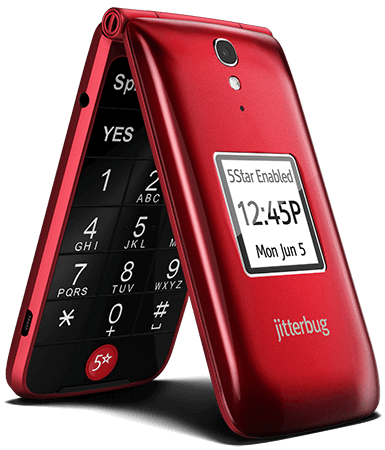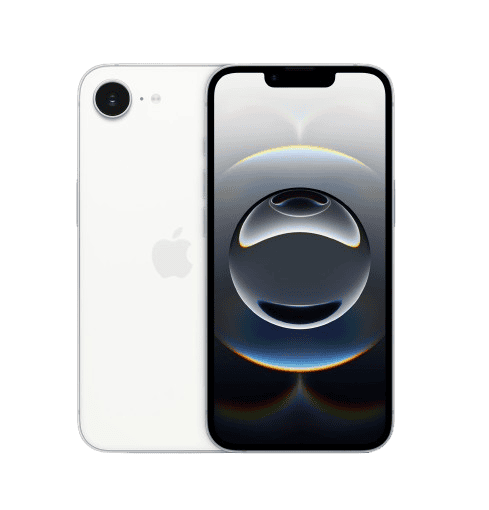The Best Phones for Seniors in 2025
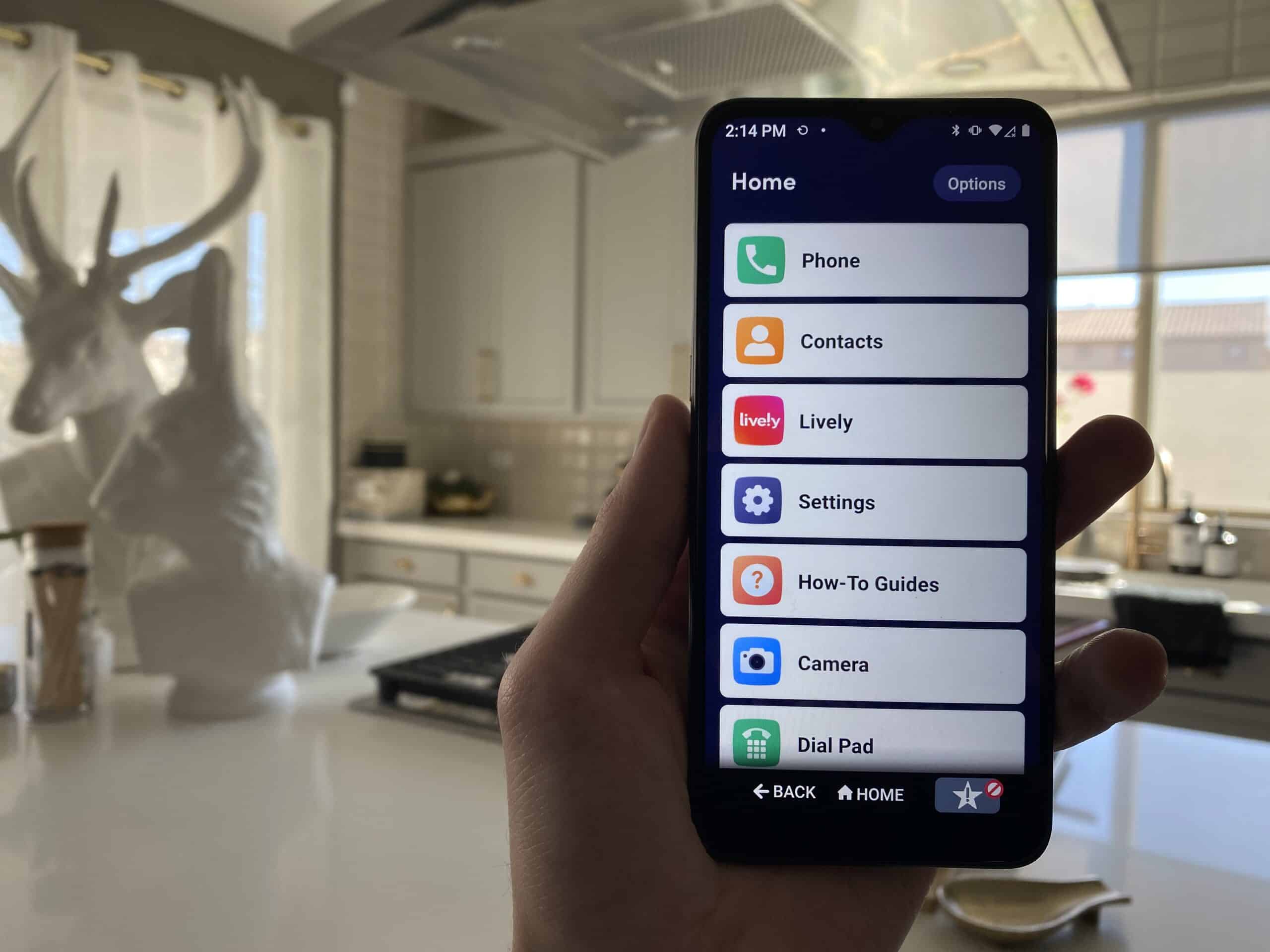
You want a phone for yourself or the older adult in your life, but you aren’t sure where to look. Should you get a smartphone? A flip phone? Will your loved one be able to use the phone without feeling lost, or will it become a $600 brick in their pocket?
After months of research and hands-on testing, our team compiled a list of the five best phones for seniors. From simple flip phones to high-performing smartphones, we prioritized devices that are easy to use. No matter which network you have right now, from Verizon to Boost Mobile, one of these phones will be compatible.
If you’re looking for a convenient way to make calls, surf the web, and connect with family, then this list is for you. Best of all, every phone on this list is under $600.
Did You Know: A good cell phone is nothing without a good network. To find out which are our favorites, check out the best senior phone plans.
Our Favorite Cell Phones for Seniors in 2025
- Consumer Cellular IRIS Easy Flip : Easiest to Use
- Jitterbug Flip2 : Best Medical Alert Features
- Apple iPhone 16e : Best Camera Quality
- Jitterbug Smart4 : Best Smartphone for Seniors
- RAZ Memory Cell Phone : Best for Seniors With Dementia or Alzheimer’s
The Best Cell Phones For Seniors
1. Consumer Cellular IRIS Easy Flip - Easiest to Use

844-580-0512
What We Like Most:
- 5MP camera
- M4/T4 hearing aid compatibility
- Large, backlit keypad
- Speed-dialing
Overview
Cost: $59 from Consumer Cellular
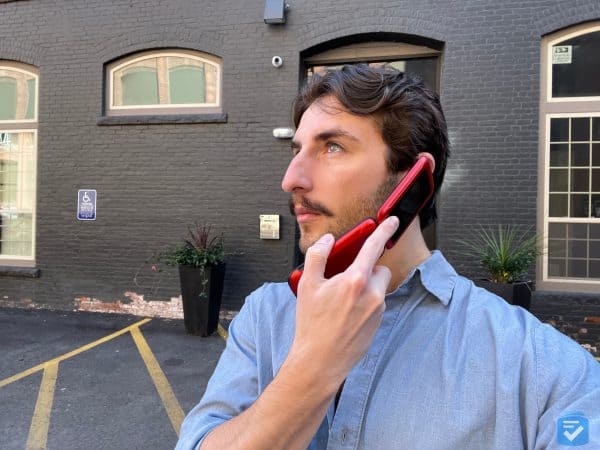
The IRIS Easy Flip is a solid choice for anyone looking for a straightforward phone for calls, texts, and basic voice commands. Priced at just under $60, it pairs with a Consumer Cellular plan offering unlimited talk and text for $20 per month.
Usability
In our Consumer Cellular tests, we noticed that the IRIS Easy Flip has a large, bright screen and clearly legible buttons. The menus are also simple and straightforward. There were no unnecessary features cluttering things up, which is why we think older adults will find it very easy to use.
We also appreciate that the IRIS Easy Flip offers internet access. That’s a nice perk, because flip phones rarely have it. We found it time-consuming to navigate the internet with the phone’s keypad controls, though.
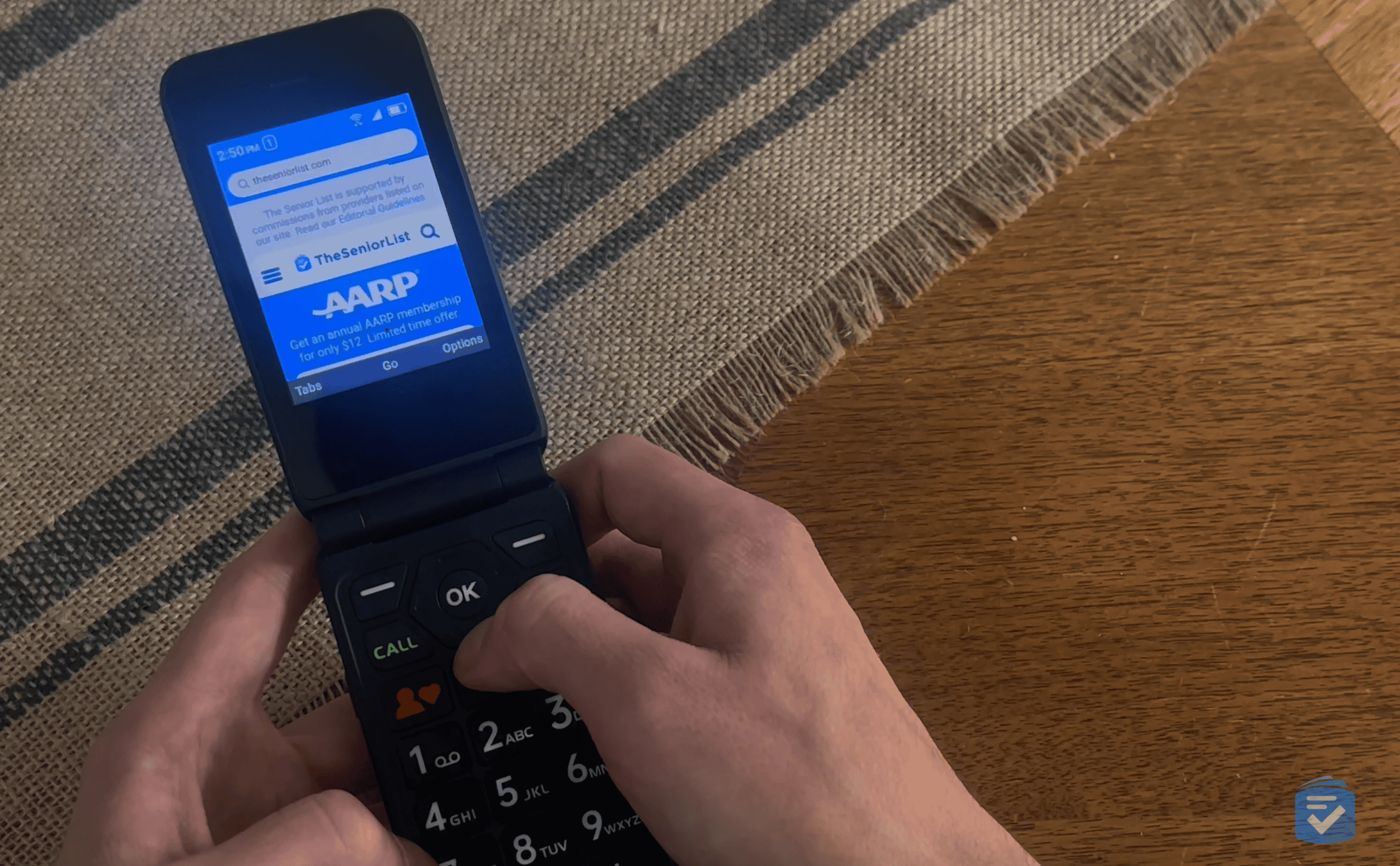
Another useful feature was the Favorites button. This button allowed us to access our most frequently called contacts. Pressing the favorites buttons opened up a new screen, wherein we could view our family’s names and contact info. This is very helpful for those who have difficulty remembering phone numbers.
Call Quality
The call quality on the Consumer Cellular IRIS Easy Flip is good. In all of our test calls, we had no trouble hearing or being heard on either end of the call.
We will say, however, that when we took the phone outdoors, our colleagues on the other end complained that there was a lot of wind noise. This makes us hesitant to recommend the IRIS Easy Flip to seniors who have trouble speaking loudly, or those who have conditions that affect speech, such as aphasia.
The phone is rated M4/T4 in terms of hearing aid compatibility. We noticed calls came through with clarity, even while we used hearing aids.
Safety Features
The IRIS Easy Flip offers no SOS buttons, fall detection, or other safety features. The closest you might find is Consumer Cellular’s optional roadside assistance, which costs an extra $4 per month.
We appreciate the option to enable safety features, but not everyone needs them. Just be aware that if you want access to nurse hotlines or urgent response monitoring centers, a Jitterbug phone is likely more suitable for you. Our next pick below is a Jitterbug flip phone with a dedicated button that gives quick access to emergency response.
Drawbacks
The biggest limitation of the Consumer Cellular IRIS Easy Flip is its simplicity. It lacks many of the advanced features you can find on smartphones, like a high-quality camera or a voice assistant like Siri. However, for many seniors, this can actually be a benefit, since they may prefer a phone without extra features they don’t need or want.
Although the photos taken with the IRIS Easy Flip’s 5MP camera don’t compete with the smartphones on this list, they’ll get the job done. While you won’t find apps or safety features on this phone, its simplicity would be ideal for someone who only needs to talk and text.
One last thing to note is that the IRIS Easy Flip is tied to Consumer Cellular, regardless of where you bought it. This means you’ll need to activate it and pay for a Consumer Cellular plan before you can switch to another carrier (which requires a call to Consumer Cellular to unlock the device).
We still think Consumer Cellular is an excellent choice for older adults who just want simple, straightforward, and affordable plans. Plus, we appreciate that the IRIS Easy Flip can be switched to another carrier after a waiting period. The Jitterbug Flip2 and Smart4, on the other hand, will only work with Lively’s service.
Pros
- Large 12-button keypad
- M4/T4 hearing aid compatibility rating
- Affordable plans
- Bluetooth connectivity
- Smart features
Cons
- No selfie camera
- Short battery life
2. Jitterbug Flip2 - Best Medical Alert Features

855-403-6340
What We Like Most:
- Alexa voice commands
- 8-MP rear camera
- Optional urgent response and health features
- Built-in magnifier and flashlight
Overview
Cost: $79.99 from Lively
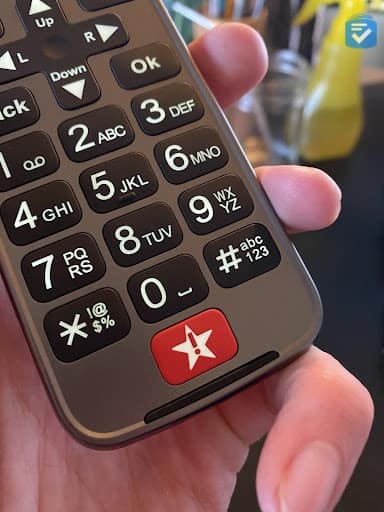
Lively’s Jitterbug Flip2 isn’t quite a smartphone, but with its Alexa compatibility, dual camera design, and safety features, it redefines how modern flip phones work. Its simple navigation menu, large backlit keypad, and built-in urgent response button make it stand out as one of our favorite phones for people who want a flip phone that doubles as a medical alert system.
>> Learn more about our favorite flip phones: The Best Flip Phones for Seniors
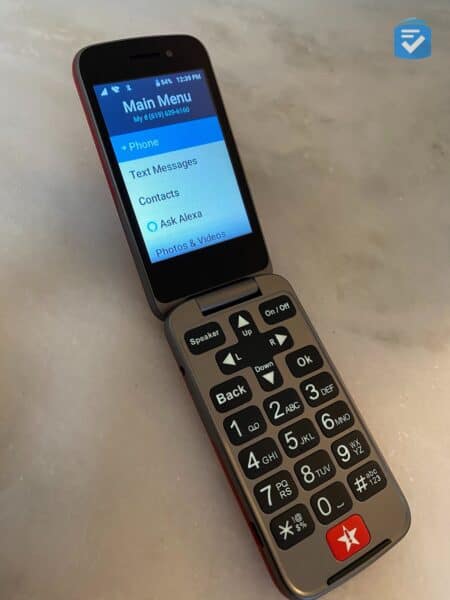
Usability
We found the Jitterbug Flip2 to be hands down the least complicated phone to use, making it a great option for older adults who want a simple flip phone. A list-based menu made it a breeze to navigate the phone’s features, including phone calls, messages, camera, and Alexa.
One of the standout features of the Flip2 is its built-in Alexa. With simple voice commands, you can make calls, send messages, and ask questions without touching the keypad. For instance, when we asked, “How many teaspoons are in a cup?” the Jitterbug Flip2 answered, “There are 48 teaspoons in a cup.”
We’ve found Alexa especially handy for checking the weather, getting traffic updates, or staying informed on current events. It’s also great for dictating text messages, making it better for those with limited hand mobility.
Call Quality
The call quality on the Jitterbug Flip2 is excellent and slightly better than the IRIS Easy Flip, especially outdoors. We had no trouble hearing or being heard on either end of the call. The phone also has a loud speakerphone, which comes in handy for hands-free calling.
We tried the call quality in different settings—indoors, outdoors, and even in noisy environments—and the phone held up well across the board. We had no trouble making or receiving calls in any situation. What impressed us most was how clear the audio remained, even during a windy walk.
Additionally, the Jitterbug Flip2 is rated M4/T4 in terms of hearing aid compatibility. When using the phone with hearing aids, we noticed no audio interference.
FYI: People ages 60 to 69 have the greatest amount of hearing loss. If you need a cell phone that works with hearing aids, check out our list of the best cell phones for hearing-impaired seniors.1
Safety Features
The Jitterbug Flip2 has a number of safety features that make it a good choice for seniors. First was the dedicated urgent response button located at the bottom of the keypad.
As long as you have an active subscription, the button will automatically contact Lively’s urgent response call center when pressed. It works much like a medical alert system, so we think it’s a great fit for seniors who don’t already have a mobile medical alert system but need one.
Since we subscribed to Lively’s premium plan, we also had access to the “Nurse-on-Call” feature. This gave us 24/7 access to a hotline staffed by nurses and doctors. In our experience, they can provide solid medical advice. We were also able to refill common prescriptions over the phone.
Drawbacks
The one caveat to the Jitterbug Flip2 is its network compatibility. Unlike all of the other phones on this list (except the Jitterbug Smart4), which work with multiple networks, it is compatible only with Lively’s plans.
Jitterbug phone plans start at $14.99 per month for 300 minutes of talk and 300 texts per month. Unlimited talk and text costs an extra $5 a month. Higher-tier plans, however, include urgent response functionality, which turns the phone into a full-fledged medical alert system. We think it’s worth the upgrade if you want the peace of mind that a cellular medical alert system brings.
To learn more about this phone, read our Jitterbug Flip2 review.
Pros
- Alexa voice commands
- Front and rear cameras
- M4/T4 hearing aid compatibility
- Voluble speaker
- Dedicated urgent response button
- Magnifier and flashlight
- Plans from $14.99 per month
Cons
- No internet access
- No support for additional apps
- Only available through Lively
3. Apple iPhone 16e - Best Camera Quality
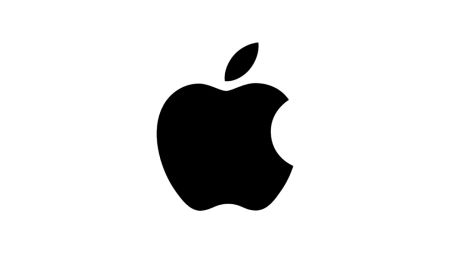
844-580-0512
What We Like Most:
- Intuitive menus
- 48MP wide camera
- Water- and dust-resistant
- Large, adjustable screen
Overview
Cost: $599 from Consumer Cellular
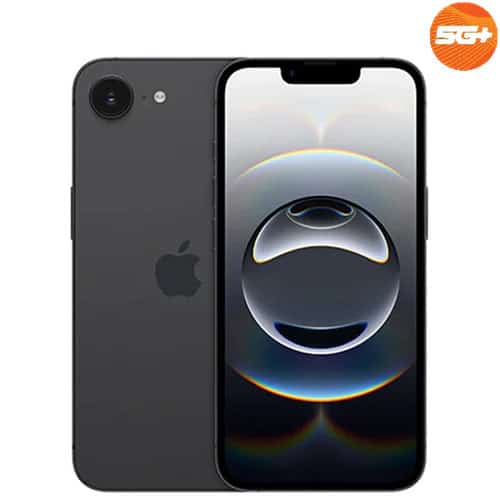
Credit: Consumer Cellular
The iPhone 16e isn’t built specifically for seniors, but it’s an excellent choice for anyone ready to move from a flip phone to a smartphone. It offers internet access, a top-notch camera, full access to the App Store, and all the capabilities of a modern device. If you’re comfortable with a bit of a learning curve, the iPhone 16e is a strong starting point.
Additionally, the iPhone 16e has the best camera of the phones on this list. All of our test photos came through with a high level of definition. And because it’s a smartphone, you can easily use it to share photos with friends or post them on social media.
FYI: According to 2025 Pew research, 79 percent of adults ages 65 or older now own smartphones.2 Year over year, older adults continue to adopt mobile technology at greater rates.
Usability
If you’ve never used a smartphone, the iPhone 16e may seem intimidating. In our experience, however, most people are able to understand how to navigate the device quickly.
It has a large, bright screen with customizable font sizes, plus the touchscreen is more responsive than most smartphones we’ve tested. We even had one of our testers, a senior who still uses a flip phone, try to use the iPhone 16e, and he was able to make calls and send texts with little struggle.
>> Learn more about the simplest phones: The Easiest Phones for Seniors
The iPhone 16e also impressed us with its built-in voice assistant, Siri. With Siri, we could make calls, send messages, and browse the web by using our voices. This iPhone’s many features may intimidate the uninitiated, but, Siri guided us through phone commands. For example, when we asked, “How do I download apps?” Siri opened the App Store. Additionally, we used Siri to:
- Set timers
- Check the weather
- Look up other information online
In most situations, Siri functions much like Alexa and Google Assistant. However, we did notice that Siri sometimes offered better voice recognition. For instance, one of our testers has a thick Italian accent, and while Alexa and Google Assistant often misinterpreted the contacts she wanted to call, Siri consistently understood her requests.
Another useful feature of an iPhone is the new Assistive Access mode, which is available on iOS 17 and later. With Assistive Access enabled, you can enlarge buttons, streamline menus and use common apps with simplified controls. To learn more about Assistive Access and how to set it up, read our iPhone senior mode guide.
Call Quality
The iPhone 16e excels in basic phone features. All of our test calls worked exceptionally well, even when using hearing aids.
Additionally, the iPhone 16e appeared to have the highest-quality microphone on this list. In our test calls, team members on the other end of the line noted the clarity. During an outdoor call, one colleague even heard our labored breathing as we walked up a hill.
The iPhone 16e is rated ANSI 2019 for hearing aid compatibility. We noticed clear audio with the phone, even with hearing aids.
FYI: Hearing aid compatibility is noted by M and T ratings, with M4/T4 being the highest rating possible. Generally, anything with an M3/T3 rating or greater is suitable for use with hearing aids.3
Safety Features
The iPhone 16e also has a number of safety features that make it a good choice for users of all ages. The phone has a built-in emergency SOS feature you can activate by pressing the power button five times quickly.
You can also customize the feature to contact a list of emergency contacts instead of 911. We did that to avoid test calling 911 during our time with the iPhone 16e, and we found that the feature works responsively. The button was easy to push, and we didn’t need to push it super-quickly to activate emergency SOS. While it’s not as intuitive as Jitterbug Flip2’s dedicated emergency button, it’s still a great alternative.
Another feature unique to this phone (as well as other iPhones) is the Find My feature, which allowed us to track the location of our phone even when we weren’t using it. You can also use this feature to share your location with contacts. We could see it being useful for just about anyone. We have all our close friends share their iPhone locations with us so we can keep track of one another.
Drawbacks
The primary drawback to the iPhone 16e is its cost. At roughly $600, depending on where you purchase it, the iPhone 16e is the most expensive device on this list. However, you can pair it with just about any cellular carrier, which can help offset some of the costs.
Consumer Cellular, for example, offers the iPhone 16e for $599. The carrier’s unlimited talk and text plans also cost as little as $20 per month.
If, however, you don’t mind paying more for a more advanced iPhone, check out our guide to the best iPhones for seniors.
Pros
- iOS app store access
- Intuitive touchscreen navigation
- Great front and rear cameras
- ANSI 2019 hearing aid compatibility
- Up to 512GB of memory
- Video call capabilities
- Siri voice assistant
Cons
- Higher cost
- More complicated than other phones
- Likely needs to be charged every day
4. Jitterbug Smart4 - Best Smartphone for Seniors

855-403-6340
What We Like Most:
- Smartphone features simplified
- Large, legible screen
- High-quality camera
- Powerful speaker
Overview
Cost: $119.99 from Lively
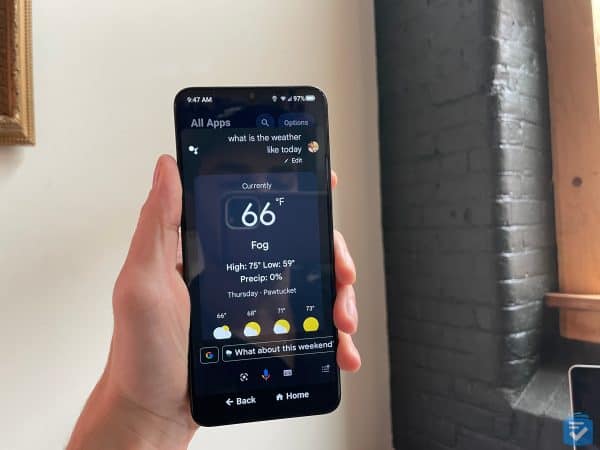
A roundup of senior-friendly smartphones wouldn’t be complete without the popular Jitterbug Smart4 from Lively. If an iPhone is a bit too complicated for you or your loved one, then the Jitterbug Smart4 is likely the best option.
Technically speaking, the Jitterbug Smart4 is an Android phone. It comes set up with Android 13, but its operating system can be updated to Android 14 post-purchase.
This means that it can perform any task that you can imagine from a smartphone, from placing video calls to utilizing apps from the Google Play Store. The Smart4, however, keeps things simple with its interface.
Usability
Although the Smart4 has every Android feature, we appreciated how everything was laid out in list-based menus. For those unfamiliar with smartphones, this helps mitigate navigational confusion.
Unlike most smartphones, such as the iPhone 16e, the Jitterbug Smart4 has dedicated “back” and “home” buttons at the bottom of the screen. This meant that no matter where we navigated, getting back to the home screen was a breeze.
FYI: It’s expected that in 2025, Android shipments will grow 40 percent faster than iOS due to the Chinese government’s subsidy program.4 If you want to be part of that trend, check out the best Android phones for seniors.
Much like other Android phones, the Smart4 supports Google Assistant voice commands. At any point, we could say, “Hey Google,” to activate Google Assistant. Once activated, we could ask Google to check the weather, call one of our contacts, or run a Google search.
Call Quality
The call quality on the Smart4 was exceptional. In all of our test calls—indoors, outdoors and in crowded cafes—calls came through clearly. The Smart4, rated M4/T4 for hearing aid compatibility, kept up the stellar audio even when we tested it with hearing aids. Its call quality was right up there with the iPhone 16e’s in terms of volume and clarity, in our opinion.
Safety Features
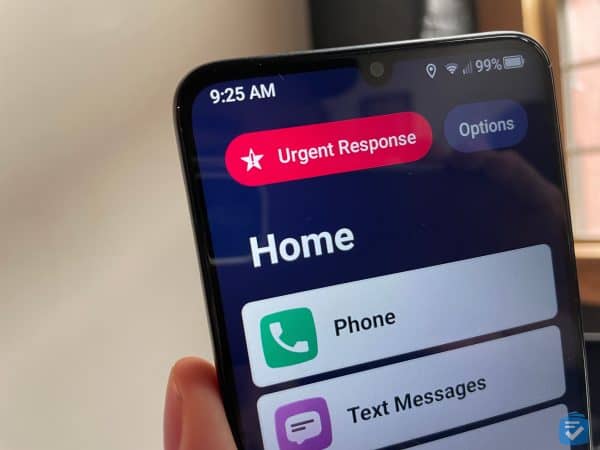
Similar to the Jitterbug Flip2, the Smart4 supports the safety features of Lively’s plans, including urgent response calling and nurse hotlines. While these features will cost a bit, plans on the Jitterbug Smart4 start at $19.99 per month for unlimited talk, unlimited text and 1GB of data.
To learn more about this phone, read our Jitterbug Smart4 review.
FYI: If you’re looking for a full-fledged medical alert device, then check out our pick for this year’s best medical alert system.
Drawbacks
The Flip2’s benefits are also its drawbacks. It’s a simplified phone that will be easy for tech-averse older adults to use, but it also lacks the features of more complicated phones, such as video chatting and streaming music, TV, and movies.
The phone also works only with Lively, while most phones, such as any regular iPhone or Android phone, are compatible with multiple carriers. If you want the freedom to switch carriers, neither the Flip2 nor the Smart4 is a good option.
Pros
- Simplified menus and navigation
- Low price
- Google Assistant
- Optional medical alert features
Cons
- Must be charged nightly
- Compatible only with Lively
5. RAZ Memory Cell Phone - Best for Seniors With Dementia or Alzheimer’s
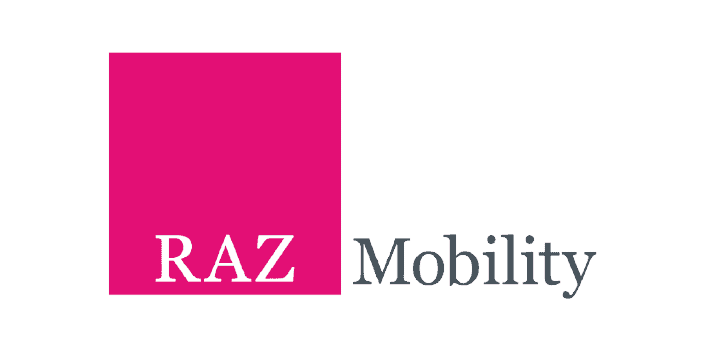
What We Like Most:
- Designed for users with Alzheimer’s or dementia
- Simple picture-based menu
- Available on several networks
- Online caregiver portal

Overview
Cost: $349 from RAZ Mobility
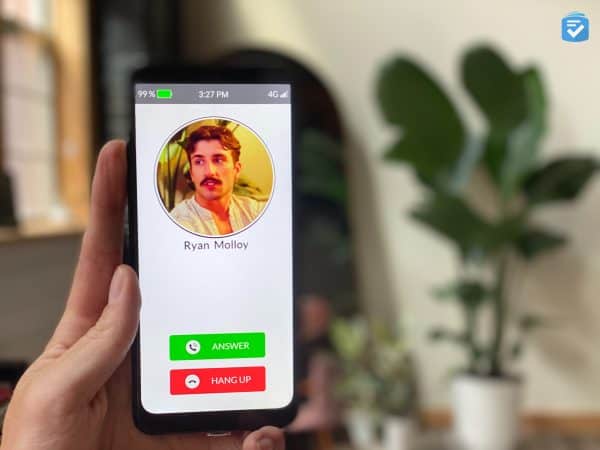
Made for people with dementia, Alzheimer’s, or intellectual disabilities, the RAZ Memory Phone is a great option with simplified functionality. Through its picture-based contact list, the Memory Phone lets you make and receive calls with minimal confusion.
Usability
Despite the RAZ Memory Phone’s large touch screen, it has only one menu. It displays the contact info and photos for up to six contacts, in addition to a dedicated 911 button. The simplified menu may not work for everyone, but it can drastically cut down on the confusion that endless menus and notifications cause.
>> Read more: The Best Cell Phones for the Visually Impaired
For example, with a normal smartphone, it’s easy to unintentionally navigate through various apps and menus. With the Memory Cell Phone, we could either press one of six contact photos (triggering a call) or press the 911 button. For example, when we wanted to call our Editor-in-Chief, Amie Clark, we pressed and held the icon with her photo, triggering a call.
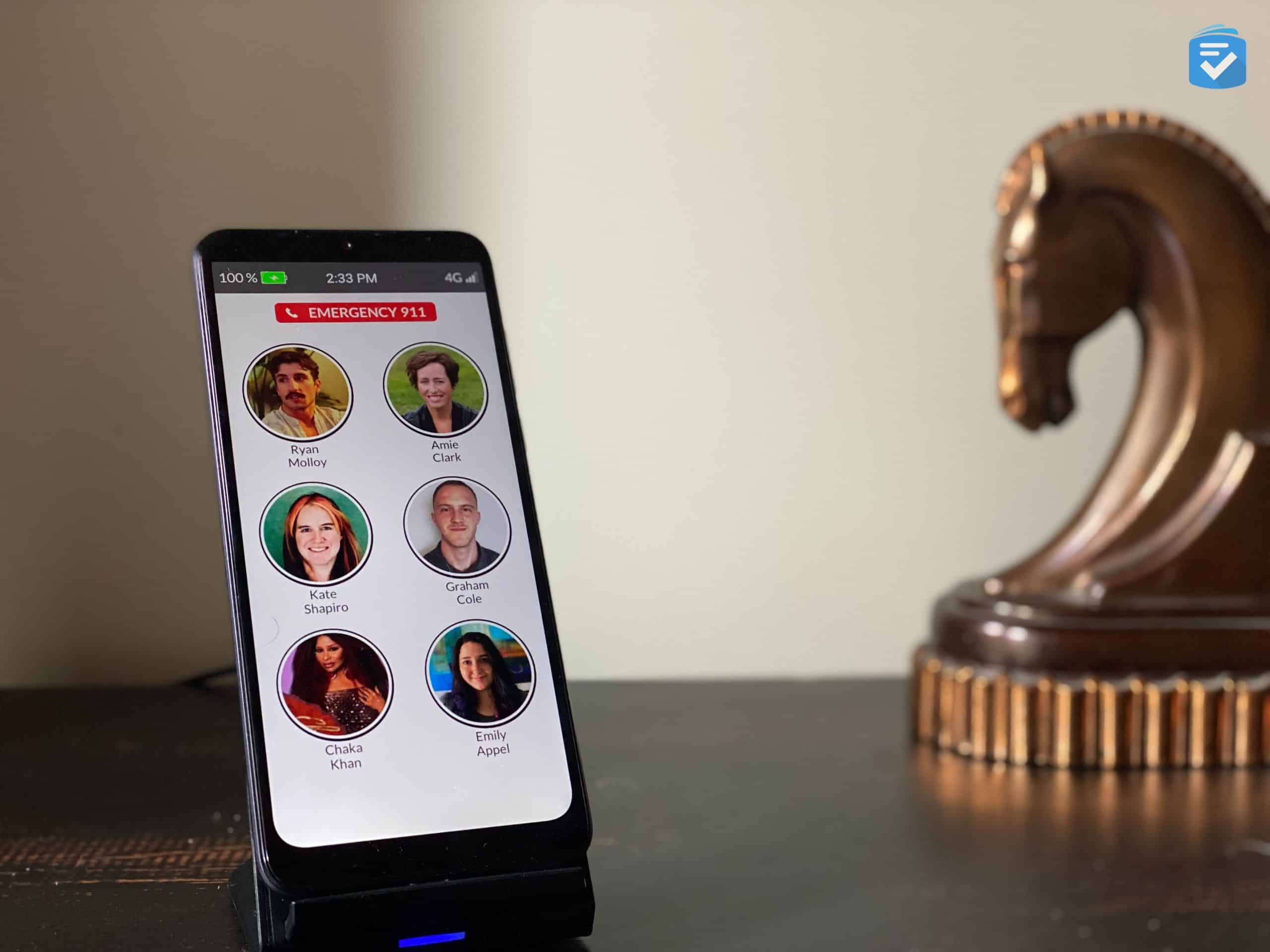
Call Quality
The RAZ Memory Cell Phone delivered solid call quality, with loud, clear audio that made conversations comfortable to follow on both ends. It holds an M4/T3 hearing aid compatibility rating (slightly lower than the Jitterbug Flip2), but in our testing, calls remained just as clear when we were using hearing aids.
Safety Features
With the Memory Phone, loved ones can keep track of the device through the RAZ online portal. Using this portal, we could create and edit contacts, check the phone’s battery life, and see its location. That information can be vital for people caring for loved ones with degenerative conditions.
Drawbacks
The main drawback to the Memory Cell Phone would be its simplicity which, ironically, is also its strength. Essentially, the phone can only make and receive calls. To adjust the volume, we had to use the RAZ caregiver portal. If a person wants a more feature-rich experience, then we’d recommend the Jitterbug Flip2.
>> See more phones for those with Alzheimer’s: The Best Phones for People with Dementia
After testing the phone for days, we have to say that the Memory Phone is certainly not for everyone, especially people who need phones for more than phone calls. For people with cognitive impairment, however, it can provide a much-needed means of contact.
To learn more about our experience, read our RAZ Memory Cell Phone review.
Pros
- Simple menu
- 911 button
- Picture contact list
- Large touch screen
- GPS location
- Video calling
Cons
- No messages, apps or internet access
- Relatively costly
What to Look for in a Cell Phone for Seniors
When buying a phone for an older loved one, be aware of the following factors.
Accessibility
Large buttons and display: Older adults may have difficulty seeing and manipulating small buttons and screens, so look for a phone with large buttons and a bright, clear display.
Hearing aid compatibility: If your loved one wears a hearing aid, make sure the phone you choose is compatible. That means the phone should be able to transmit audio directly to the hearing aid without interference.
Speakerphone: A speakerphone is essential for older adults who have difficulty hearing or manipulating phones. Look for a phone with a loud and clear speakerphone, which makes it easy to place and receive calls.
Voice commands and voice typing: One way the best smartphones for seniors have increased accessibility is through voice commands. With voice commands, you can place calls, dictate texts, and activate various phone functions using your voice.
Usability
Simple menu system: Many people have difficulty navigating complex menus, so look for a phone with an easy-to-understand menu system.
SOS button: Some phones have a dedicated SOS button used to call for help in an emergency, a valuable feature for older adults who live alone or have chronic health conditions.
Emergency alerts: Some phones, such as the Jitterbug series, can send emergency alerts to designated contacts if the user does not respond to calls or texts for a certain period of time. This can be a helpful safety feature for seniors.
Other Features to Consider
Battery life: Older adults may use their phones less frequently than younger people, but they may need to rely on their phones for longer periods in case of an emergency. Look for a phone with a long battery life so you don’t have to worry about running out of power.
Camera: A camera can be a nice feature for older adults who want to take photos and videos of their family and friends, but it’s not essential.
Price: Cell phones can range in price from a few dollars to several hundred dollars. Choose a phone that fits your budget and needs. You can also find a good selection of unlocked phones on Amazon.
>> Looking for an unlocked phone? The Best Unlocked Phones for Seniors
Types of Cell Phone Plans for Seniors
There are two main types of cell phone plans available: postpaid and prepaid.
Postpaid plans: Postpaid plans are service agreements you set up with a cellular provider, typically lasting one or two years. You commit to paying a monthly fee, which often covers unlimited talk and text plus a set amount of data. Many postpaid options also throw in extras like mobile hotspot data, international roaming, and even streaming service subscriptions.
Prepaid plans: Prepaid plans do not require contracts. You pay for the service you use only. Typically, prepaid plans are more affordable than postpaid plans, but they may not offer as many features, just a certain amount of talk, text, and data. That being said, usually, you can purchase additional minutes or megabytes of data if you need them.5
In recent years, however, many postpaid providers like T-Mobile, Verizon, and AT&T have moved away from long-term contracts. Instead, they’ll offer you month-to-month service that is tied to the price of your phone. For example, with Verizon, you can buy the latest iPhone for $27.77 per month for three years, provided you lock into a three-year service agreement.
Within these two main categories, there are a variety of different cell phone plans available. Some of the most common types of plans include:
Individual plans: Individual plans are designed for a single user. Typically, they include unlimited talk and text, as well as a certain amount of data each month.
Family plans: Family plans allow you to add multiple lines to a single account, which can be a cost-effective option if you have multiple family members who need cell phone service. Often, family plans offer a discount for each additional line.
Unlimited data plans: Unlimited data plans offer unlimited data usage each month. They’re a good option for users who stream a lot of video and music or who need to use their phones for work or school.
Limited data plans: Limited data plans offer a smaller amount of data each month. They’re a good option for users who don’t need a lot of data or who are on a budget.
Pay-as-you-go plans: Pay-as-you-go plans allow you to purchase talk, text, and data as you need. They’re a good option for users who do not need a lot of service, or who are on a tight budget.
Senior plans: Some cell phone providers offer specific plans and discounts for people over 55. Often, senior plans include extra features such as medical alerts, medication reminders and wellness check-ins. T-Mobile, Consumer Cellular, and Lively offer discounted cellular plans for seniors.
>> Looking for a phone on a prepaid network? The Best Prepaid Cell Phones for Seniors
Our Favorite Cellular Provider for Seniors
Selecting a cellular provider that has the features you need is as important as choosing a phone. When checking out plans, try to find one with ample allowances for talk, text and data. We recommend Consumer Cellular or Lively.
Consumer Cellular prices start at $20 per month for unlimited talk, unlimited texts, and 1GB of data. While unlimited data pricing shoots up to $50 per month, you can add additional lines for only $15 per month each, regardless of the plan you choose.
Lively, on the other hand, stands out for its intuitive Jitterbug phones and their safety features. Lively’s plans start at $14.99 per month for 300 minutes of talk and 300 texts (with the Flip2) or $19.99 for unlimited talk and text, plus 1 GB of data (with the Smart4), and you can add more safety features for an additional cost.
If you’re looking for a cell phone for yourself or a loved one, here are a couple of helpful cellular guides:
How We Chose the Best Phones
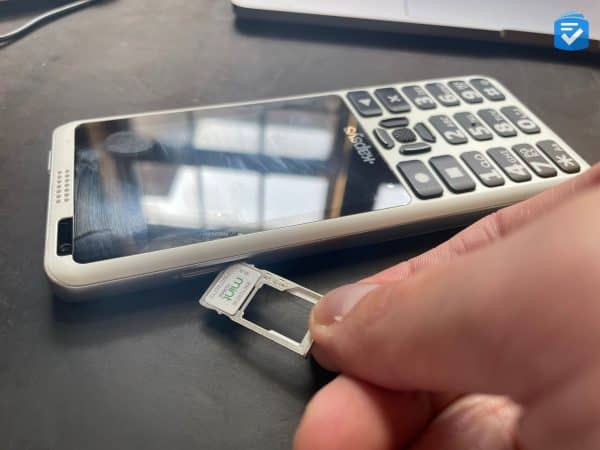
Here’s how we evaluated our favorite phones for seniors.
Affordability: Modern cell phones can cost upward of $1,000, but we looked for devices that cost $600 or less. Most of the phones on this list cost less than $200.
Ease of use: In our tests, we looked for cell phones with menus and features that were easy to navigate. Particularly for smartphones, the interface must be intuitive.
Safety features: Some phones for seniors have safety features such as SOS buttons, nurse hotlines, and fall detection. We gave extra points to devices that could connect and protect their users.
Call quality: We conducted over 100 test calls with each phone to ensure that speech came through clearly on both ends.
Accessibility: All the phones on this list have adjustable font sizes, making them ideal for people with vision impairment. We also tested each phone to ensure it worked with hearing aids.
Frequently Asked Questions
-
What features should seniors look for in a phone?
No two users are the same, but it’s likely that most seniors will appreciate:
- Hearing aid compatibility
- Large displays
- Loud speakers
- Simplified design
- Voice commands
Jitterbug phones have all of these features.
-
What is the best cellular provider for seniors?
Lively is a great option. It offers the popular Jitterbug phones with talk and text plans for as low as $14.99 per month.
-
Is there a smartphone for seniors?
The Jitterbug Smart4 is a simple smartphone designed for seniors specifically. Additionally, the iPhone 16e is a great option for seniors who want more advanced features.
-
Are there cell phones made specifically for seniors?
Lively’s popular Jitterbug phones are simplified devices made for older adults in particular.
-
Are iPhones good for seniors?
Although iPhones are much more advanced than flip phones, their controls are highly intuitive, making them a great option for seniors who aren’t afraid of a slight learning curve.



